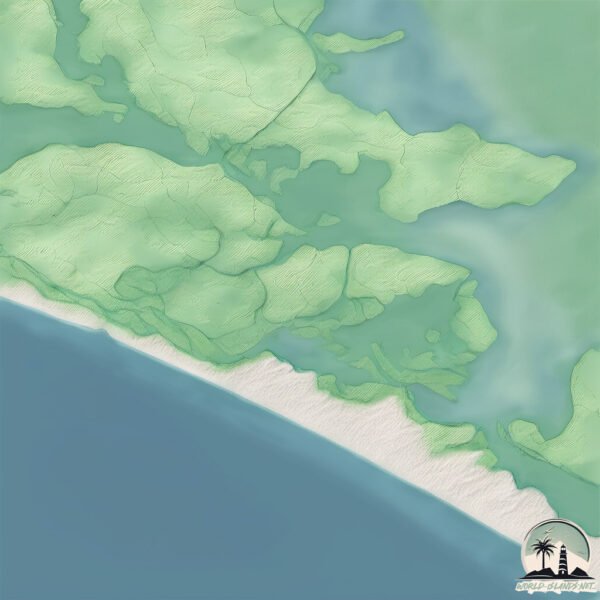Welcome to Mundoo , a Dry island in the Great Australian Bight, part of the majestic Indian Ocean. This guide offers a comprehensive overview of what makes Mundoo unique – from its geography and climate to its population, infrastructure, and beyond. Dive into the details:
Geography and size of Mundoo
Size: 23.3 km²Coastline: 35.1 kmOcean: Indian OceanSea: Great Australian BightContinent: Oceania
Mundoo is a Medium Island spanning 23 km² with a coastline of 35 km.
Archipel: –
Tectonic Plate: Australia – A major tectonic plate covering Australia, New Zealand, and parts of the Indian and Pacific Oceans, known for its relative stability and occasional seismic activity.
The geographic heart of the island is pinpointed at these coordinates:
Climate and weather of Mundoo
Climate Zone: DryClimate Details: Cold Semi-Arid (Steppe) ClimateTemperature: Cold
Climate Characteristics: Characterized by hot summers and cold winters, this climate is typically found on the edges of continental zones. It receives sufficient precipitation to avoid desert conditions.
Topography and nature of Mundoo
Timezone: UTC+09:30Timezone places: Australia/AdelaideMax. Elevation: 3 m Mean Elevation: 2 mVegetation: WetlandTree Coverage: 31%
The mean elevation is 2 m. The highest elevation on the island reaches approximately 3 meters above sea level. The island is characterized by Plains: Flat, low-lying lands characterized by a maximum elevation of up to 200 meters. On islands, plains are typically coastal lowlands or central flat areas.
Dominating Vegetation: Wetland
Vegetation: 7 vegetation zones – Very Highly Diverse Island
Infrastructure and Travelling to Mundoo
Does the island have a public airport? no .
Does the island have a major port? no .
The mean population of Mundoo is 1 per km². Mundoo is Gently Populated. The island belongs to Australia .
Continuing your journey, Hindmarsh is the next notable island, situated merely km away.
For Sale | Mundoo Island, Ewe Island and Long Island, South Australia
For Sale | Mundoo Island, Ewe Island and Long Island - A once in a lifetime opportunity to purchase an internationally significant ...
For Sale | Mundoo Island, Ewe Island and Long Island, South Australia
For Sale | Mundoo Island, Ewe Island and Long Island - A once in a ...
For Sale | Mundoo Island, Ewe Island and Long Island - A once in a lifetime opportunity to purchase an internationally significant ...
Mercurio's Menu - Mundoo Island, South Australia
The Short Story of Mundoo Island, and the Proposal.
This project focuses on a compact proposal of a 300 square meter, ...
This project focuses on a compact proposal of a 300 square meter, adaptive reuse agriculture research center located 850m away ...
Australia is classified as Developed region: nonG7: Developed economies outside of the Group of Seven, characterized by high income and advanced economic structures. The level of income is High income: OECD.
News – Latest Updates and Headlines from Mundoo
Stay informed with the most recent news and important headlines from Mundoo. Here’s a roundup of the latest developments.
Loading...
Please note: The data used here has been primarily extracted from satellite readings. Deviations from exact values may occur, particularly regarding the height of elevations and population density. Land area and coastline measurements refer to average values at mean high tide.

